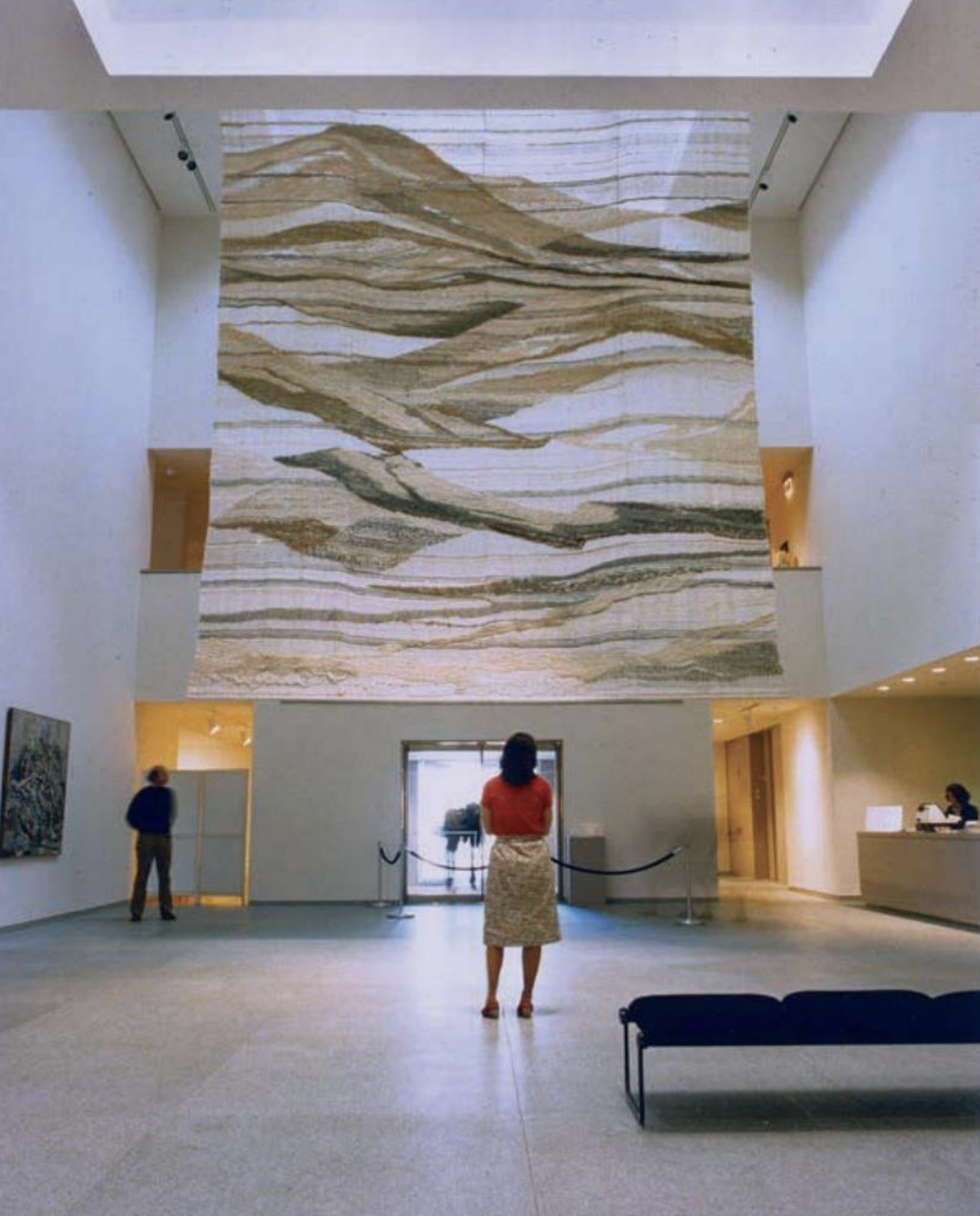Salt Shadow
Through “Salt Shadow,” Hemenway sought to capture the motion of light and wind as they dance and blend across the ocean. While making “Salt Shadow” Hemenway wrote, “I believe this will be the only translucent tapestry of this dimension in existence.” In this work, Hemenway sacrifices traditional methods of construction in favor of compositional flexibility to capture the grandeur of a sparkling sea. Uncommon amongst fiber artists, and integral to “Salt Shadow,” is the capacity to weave off-loom. Hemenway relied on this technique to create the elegant tapestry and to imbue it with its translucent quality.
“Salt Shadow,” which was commissioned for the Great Hall at the Portland Museum of Art, is over 22 feet high and 18 feet across. The work, crafted on a basal layer of fiber unique to Eswatini, involves a range of alpaca, mohair, karakul, and lamb’s wool from around the world which Hemenway collected over ten years.
In this work, Hemenway sacrifices traditional methods of construction in favor of compositional flexibility to maintain a near-obsessive dedication to representative accuracy. Looseness in weave, an unsparing use of quality fiber, and a determination to diversify the materiality of the piece all contribute to this aim. From this, Hemenway manages to strike a delicate balance. The work imparts a relationship between life’s major elements and majestic waters, underscoring their shared dynamism and ephemerality, while reminding the viewer that each substance contains within itself a capacity to become monumental when amassed and arranged just so.
The size of “Salt Shadow” is almost requisite to impress upon a viewer the magnificent grandeur of the ocean. However, while size is necessary to evoke the emotional quality of water, it is not sufficient. The shine of individual waves and a spectral mix of oranges and tans, varying patterns of windswept waters, and the shadows of a beating sun over evolving formations all begin to explain the oscillatory macro and micro fascinations of the bold ocean. To capture the emotion of this natural phenomenon requires an understanding of scale in both directions.


